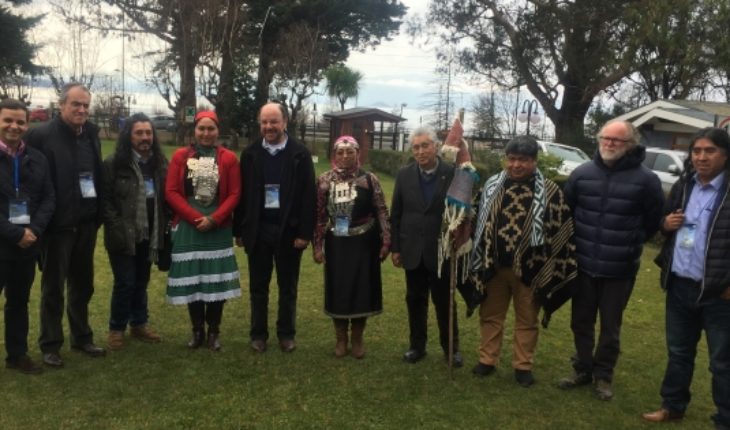on September 24, President, Sebastián Piñera, presented its proposal for a national agreement for peace and development in Araucanía, which aims to be one of the five “major national agreements” that aims to boost his Government. It is an initiative led by the Minister, Alfredo Moreno, collecting proposals of the Presidential Advisory Commission implemented 2017 during the tenure of Michelle Bachelet and which is based on three principles: the will for dialogue, agreement and search for peace; the recognition and measurement of our diversity; and the comprehensive and inclusive development to the region. Given the importance of this proposal and the discussions which has generated, it is necessary to discuss it thoroughly, analyze your goals and discuss its possible scope.
The proposal aims promote economic investment in the region, ensuring a stable political and social climate for it. In this sense, is not aimed to address demands for territory, self-determination and autonomy claimed by the mapuche during the last two decades and could even argue that the “agreement” is contrary to these aspirations.
Thus, although measures towards the mapuche population, they are running primarily to promote and reset trusts of regional and business elites who perceive has bowed too against mapuche demonstrations and progress on of recognition of cultural difference. From there the accession of these elites to the ‘deal’ and the vaunted “peace” may be nothing more than a formula of reconciliation and reaffirmation of socio-racial hierarchy in the Araucanía. Reconciliation, which, in the case of the mapuche, it would land on a package of initiatives aimed at enhancing cultural difference as a niche business, along with weak recognition measures, outdated, insufficient, typical of a multiculturalism neoliberal warm and subtle.
The initial results of an investigation are doing and which uses data of 180 communes (6 regions) in a period of 15 years, show that the expansion of the forestry industry revenues did not increase, did not reduce unemployment, but if increased poverty and the inequality between indigenous and non-indigenous. For example, in the commune of Ercilla, emblematic in the so-called “conflict”, a mapuche worker wins half of the salary of a non-mapuche worker. In Lumaco, where more than 60% of the territory is covered by forest plantations, a mapuche worker won 66% of the salary of a worker not mapuche (Casen, 2017).
Is no accident, therefore, the Government’s plan to produce the rejection of a broad spectrum of actors and communities, particularly as a result of the interest of the Government and employers to modify the Law 19.253 for indigenous land – mainly through of leases – are incorporated and subsuman in the forest, real estate business or the productive reconversion in the areas of agriculture, tourism and energy.
However the above, one aspect that has had less attention in the debate is the mechanism for “comprehensive and inclusive development for the region”. The proposal aims to increase private investment, assuming that the largest investment would lead to a lower unemployment, higher wages and greater diversity of sources of employment. Thus, from the logic of the current Government, the ‘invisible hand’ of the market will benefit everyone and as a result we will have a more integrated and inclusive region. But the investment if one is able to achieve this objective? Previous experience can illuminate a possible answer. For example, what have been the effects of the investment that made the forest industry in the South of Chile and which favored the State subsidy through the Decree of law 701? Industry, which grew from 300,000 hectares in 1974 to 2.700.000 hectares 2013.
The initial results of an investigation are doing and which uses data of 180 communes (6 regions) in a period of 15 years, show that the expansion of the forestry industry revenues did not increase, did not reduce unemployment, but if increased poverty and the inequality between indigenous and non-indigenous. For example, in the commune of Ercilla, emblematic in the so-called “conflict”, a mapuche worker wins half of the salary of a non-mapuche worker. In Lumaco, where more than 60% of the territory is covered by forest plantations, a mapuche worker won 66% of the salary of a worker not mapuche (Casen, 2017).
It is true that these gaps can also be explained by other factors, such as level of education, labour branch or occupation of the worker. However, figures show us not only the backlog is the mapuche population in the region, but also how the expansion of monoculture forestry has deepened the socio-racial inequalities in the Araucanía.
In this sense, acquires relevance to ask if you can the proposal put forward by the Government reverse this scenario and achieve a comprehensive and inclusive development to the region. Based on the results of the expansion of the forest industry, it is necessary to be cautious about the real extent of the increase in private investment. The “invisible hand” market fails to further integration and inclusion, rather it could lead to the opposite result. From there than to any serious interest in transforming the conditions of poverty and inequality in Araucanía necessarily must divide to address, at least two fundamental problems: political rights and territorial mapuche violated as the need of a alternative economic model to the historical pattern of extractive.
Otherwise, the “agreements” as proposed by the current Government will only benefit the same actors always, will continue to deepen the historical mistrust, poverty and socio-racial inequality.
translated from Spanish: Who would it benefit the Araucanía “agreement”?
October 14, 2018 |





